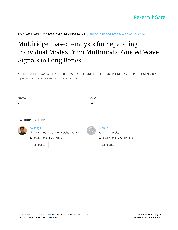摘要
Quantitative ultrasound has great potential for assessing human bone quality. Considered as an elastic waveguide, long bone supports propagation of several guided modes, most of which carry useful information, individually, on different aspects of long bone properties. Therefore, precise knowledge of the behavior of each mode, such as velocity, attenuation, and amplitude, is important for bone quality assessment. However, because of the complicated characteristics of the guided waves, including dispersion and mode conversion, the measured signal often contains multiple wave modes, which yields the problem of mode separation. In this paper, some novel signal processing approaches were introduced to solve this problem. First, a crazy-climber algorithm was used to separate time-frequency ridges of individual modes from time-frequency representations (TFR) of multimodal signals. Next, corresponding time domain signals representing individual modes were reconstructed from the TFR ridges. It was found that the separated TFR ridges were in agreement with the theoretical dispersion, and the reconstructed signals were highly representative of the individual guided modes as well. The validations of this study were analyzed by simulated multimodal signals, with or without noise, and by in vitro experiments. Results of this study suggest that the ridge detection and individual reconstruction method are suitable for separating individual modes from multimodal signals. Such a method can improve the analysis of skeletal guided wave signals by providing accurate assessment of mode-specific ultrasonic parameters, such as group velocity, and indicate different bone quality properties.
- 出版日期2010-11
- 单位复旦大学
